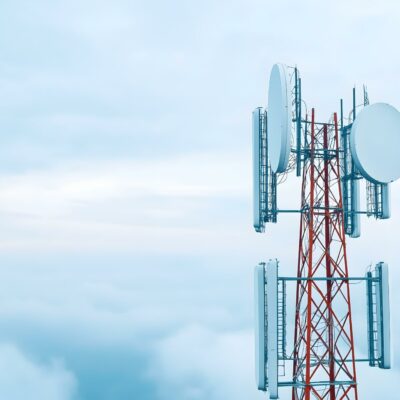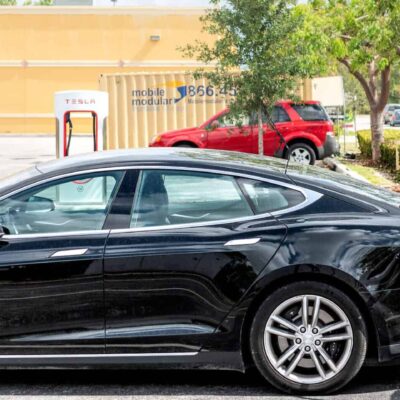In-car gaming is about to level up at Tesla.
Elon Musk made waves when he first implemented Tesla’s gaming library in 2019. Models from the future-forward brand have been equipped with the ability to utilize ‘Tesla Arcade’, which is an entertainment platform accessible through the vehicle’s in-car monitor. At conception, the platform offered a few simple games for drivers to play, and now, the company currently offers around 20 games that range from Sega classic Sonic the Hedgehog to fan favorites like Solitaire and Chess.
In his quest to continue transforming his cars into gaming devices for Tesla owners, Musk is making moves towards an even bigger gaming feat: an integration of Valve’s Steam platform. Steam is the world’s largest distribution channel for PC gaming, and currently boasts more than 200,000 titles in its catalog- some of which can’t even be played on Valve’s own hardware. And since February, Musk has made it known that the company is “working through the general case of making Steam games work on a Tesla vs specific titles.”
Cars as the New Console
The expansion of gaming in Tesla vehicles doesn’t come as a shock. Musk has been a proponent of video gaming innovation since before he blew up the tech scene, and he believes that he probably would not be where he is today if it wasn’t for gaming. Musk even considers the best software engineers in the world to be those who have spent time at video game houses, claiming that problem-solving in video games directly translates to problem-solving in software engineering.
That belief is likely helping him propel Tesla’s dreams of self-driving cars forward as enhanced graphics in video games allow his team to utilize artificial intelligence to simulate autonomous vehicle operations in a photorealistic world. He explained that “If people had to try to create incredibly realistic graphics using very little computer power, it’s a hard problem, so a lot of people had to write really tight code and come up with really clever ideas to do that.” And this dedication to gaming and autonomous driving goes hand in hand for the mogul as he feels that gaming will not only help him create self-driving cars but will also help him sell them.
Musk has reiterated the fact that “Entertainment will be critical when cars drive themselves.” The launch of Tesla Arcade was the first step in this entertainment equation, and the addition of controllers and implementation of new gaming computers in select models has continued pushing it forward. The new software runs on an AMD Ryzen CPU and an AMD RDNA-2 GPU, providing PS5-level processors that can support graphically complex games. This impending Steam integration will build upon this foundation, offering a full console video gaming experience inside consumers’ cars. And while this is the next step in ensuring Tesla users will be entertained while waiting for a quick charge or during an autonomous commute, it also opens the door for intense legal battles over everything from security to safety.
Looking Ahead to Litigation
What do we currently know about this incoming integration? Not much- but we likely will soon. Musk tweeted on July 15 that Tesla was “…making progress with Steam integration. Demo probably next month.” In order to prepare, it is important to identify where disputes may arise. With any connected vehicle concept, security is always a concern. Steam accounts have experienced a wide range of hacking issues in the past, and it is hard to determine just how much of the vehicle’s systems could be compromised if this were to happen to the account associated with Tesla’s software.
Musk has already found himself in hot water over in-car gaming policies. Last year, Tesla drivers were granted the ability to play games both in park and while driving, allowing them to bypass a safety confirmation asking if the intended player was a passenger or driver. This was quickly criticized by the National Highway Traffic Safety Administration (NHTSA) and brought on an investigation by the US government, prompting Musk to reverse the new policy back to only allowing gaming while the vehicle is in park.
It is hard to tell how his policy will evolve alongside autonomous technology, but there will likely be a slew of product liability concerns associated with the potential distracted driving issues brought on by this integration. And even if future software updates prevent drivers from interacting with the platform while the vehicle is moving, consumers will likely find workarounds as they do for a myriad of other software blockers on other gaming consoles. Since current regulations don’t cover the risks associated with this type of technology, we should expect to see new directives regarding in-car entertainment coming soon.
As the market moves forward, these concerns will surround more than just the Tesla brand; other autonomous vehicle makers will likely pursue similar entertainment innovations in order to attract consumers looking for a future-forward approach to travel. And it is important to engage with experts both in the automotive and video gaming spaces to prepare for potential disputes.
At WIT, we are working hard to continue identifying areas in the automotive and gaming spaces that will be ripe for potential disputes. Our team features industry insiders, game developers, computer scientists, software engineers, automotive engineers, and more with the expertise to provide industry and academic perspectives essential to any litigation. Contact us to learn more about how our experts can help you prepare for this future industry integration.




